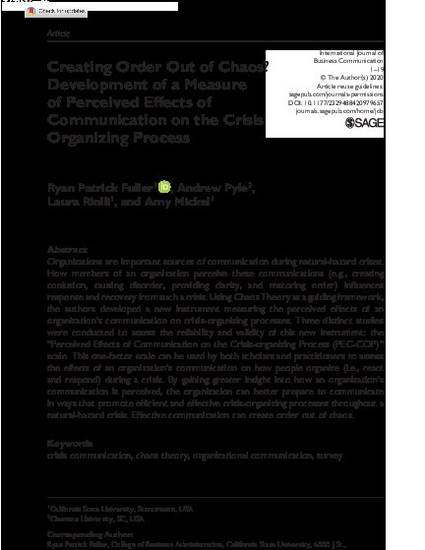
Organizations are important sources of communication during natural-hazard crises. How members of an organization perceive these communications (e.g., creating confusion, causing disorder, providing clarity, and restoring order) influences response and recovery from such a crisis. Using Chaos Theory as a guiding framework, the authors developed a new instrument measuring the perceived effects of an organization’s communication on crisis-organizing processes. Three distinct studies were conducted to assess the reliability and validity of this new instrument: the “Perceived Effects of Communication on the Crisis-organizing Process (PEC-COP)” scale. This one-factor scale can be used by both scholars and practitioners to assess the effects of an organization’s communication on how people organize (i.e., react and respond) during a crisis. By gaining greater insight into how an organization’s communication is perceived, the organization can better prepare to communicate in ways that promote efficient and effective crisis-organizing processes throughout a natural-hazard crisis. Effective communication can create order out of chaos.

The published version of this article can be found here: https://journals.sagepub.com/doi/full/10.1177/2329488420979657